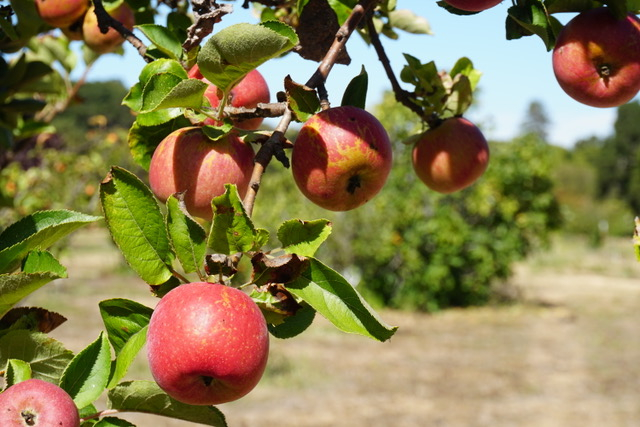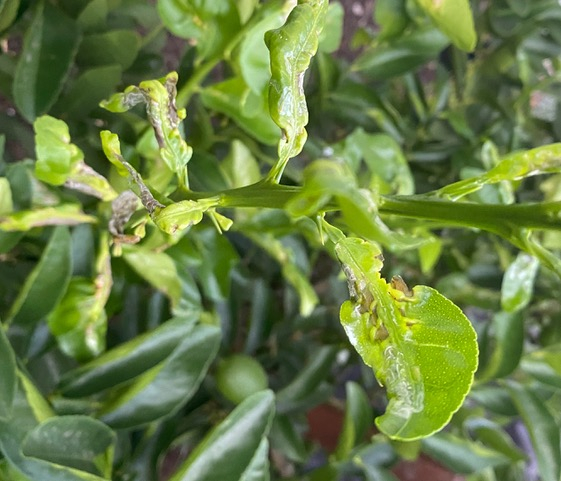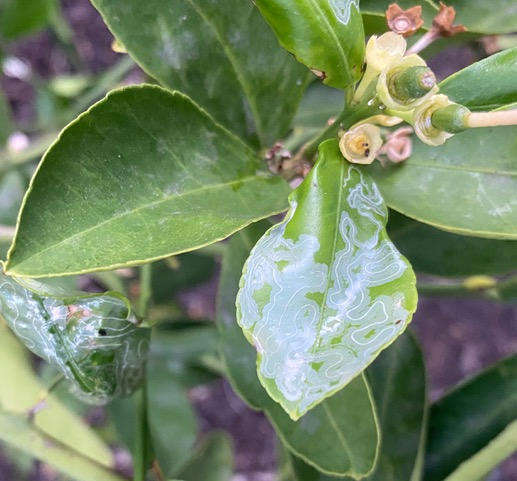Do you have a gardening question? The UC Master Gardeners of Santa Clara County can help. Our volunteers are part of the University of California’s Cooperative Extension program and we are trained to use research-based information to educate our fellow residents on sustainable gardening and landscaping practices specifically for our area.
Our monthly "Ask a Master Gardener" column will answer your questions and offer tips. Have a question? Email lifestyle@embarcaderopublishing.com or leave a comment at the end of this month's column.
What should I know about planting bare-root fruit trees?
Fall and early winter are the best time to plant bare-root fruit trees, which are now beginning to appear in nurseries. Bare-root trees have been excavated at a young age from growing fields when they are dormant and transported for sale without soil. Planting these young, leafless trees now means their roots will develop in your own native soil, instead of having to transition from potting mix in a nursery can.
Many fruit trees need a certain number of “chill hours” each winter to produce blossoms in the spring. Since we can’t change the weather, it’s important to select new fruit trees with required chill hours that match our area. Chill hours are accumulated from November through February when temperatures are between 32 and 45 degrees for a number of hours. (Your local nursery can provide information on the number of chill hours needed for the tree you select for your location.)
Fruit trees should be planted in deep and well-drained soil where they will receive full sun for at least six hours a day. Choose fruit trees that have a trunk diameter from 1/2 to 5/8 inches. Dig a hole that is twice as wide as the spread of the tree’s roots, but no deeper than the depth of the root ball. To maintain a tree that’s easy to prune and harvest, cut the new tree at knee height to encourage the tree to develop lower branches. That may seem harsh, but you’ll be thankful when you can easily pick that perfect peach or apple instead of yearning for the unreachable fruit at the top of the tree.
You can learn more by attending a class on Nov. 11 about tree selection and how to plant and care for fruit trees presented by the UC Master Gardeners of Santa Clara County.
Some leaves on my lemon tree are curling and look gnarled and disfigured. What’s the problem here?
This is one of the most common questions received by our Help Desk. The damage is due to the citrus leafminer moth, which lays eggs on new citrus leaves. It’s most common on oranges, mandarins, lemons, limes and grapefruit. Its larvae burrow into the young leaf and leave tunnels as they feed, visible as meandering serpentine mines. The larvae mine inside the lower or upper surface of newly emerging leaves, causing them to curl and look distorted.
You may be tempted to use insecticides to control them, but don’t do it. Insecticides aren’t effective and instead could disrupt a natural enemy of the leafminer moth, which is a tiny, nonstinging wasp.
Our advice: Don’t worry about leafminers. They might slow the growth of young trees but even heavily damaged trees are unlikely to die. Leafminers only attack tender young citrus leaves – the tough leaves of mature plants resist infestation and fruit is not affected. Damaged leaves still produce food for the tree, so don’t cut them off. If you do, it will stimulate the tree to produce more new leaves — which will attract more leafminers!
November Gardening Tips
There’s still plenty to do in the garden as the weather turns cool.
• Replenish your soil: After harvesting remaining summer crops, add a layer of compost to garden beds to provide needed nutrients for winter crops. Consider adding amendments such as blood meal, alfalfa pellets or fish emulsion to replenish nitrogen in the soil. Consider planting a cover crop. Be sure to leave some areas of native soil bare for ground-nesting bees.
• Divert rainwater: Install downspout diverters to direct rain runoff to landscape trees and plants. Remove containers where rain may create standing water.
• Plan for frost: Make a plan to protect frost-sensitive plants. If frost is predicted, keep the root zone moist but not soggy. Cover sensitive plants overnight with cloth or similar material other than plastic to reduce heat loss. Remove covers during the day. The approximate first frost date in our area is around Nov. 15.
• Care for tools: Clean dirt and sap from your tools and coat steel surfaces (check with a magnet if you’re not sure) with a light coating of oil to prevent rust. You can sharpen pruners and loppers. We have a video showing how to clean and sharpen tools.
• Plant Garlic and Shallots: The time to plant most garlic and shallots is mid-October through the end of November. Fast-growing Dutch Red shallots can mature in just 90 days, so can be planted again in late winter or early spring. Choose the largest cloves and leave the natural papery wrappers on them. Plant them in moist, well-drained soil in a sunny location with the pointy tips up, about one inch deep. Space cloves about four inches apart to leave room for large heads to develop.
Here’s more information on how to grow garlic and shallots.
• Plant Native California wildflowers: The time to plant is now, before winter rains. Select a well-drained and sunny site, remove weeds, and lightly rake the surface of the soil. Hand-disperse seeds and lightly cover with soil, no more than about 1/4 inch. Gently tamp them down with the back of a rake and water. After that, let Mother Nature take its course – and hope for rain.
Do you want to ask a master gardener about a plant problem? Submit questions to our Help Desk. Find garden events and classes here.
You can also subscribe to our monthly Tips and Events newsletter and to our seasonal Thyme to Garden blog.
San Mateo residents can also find gardening advice on the UC Master Gardeners of San Mateo and San Francisco website.




Comments